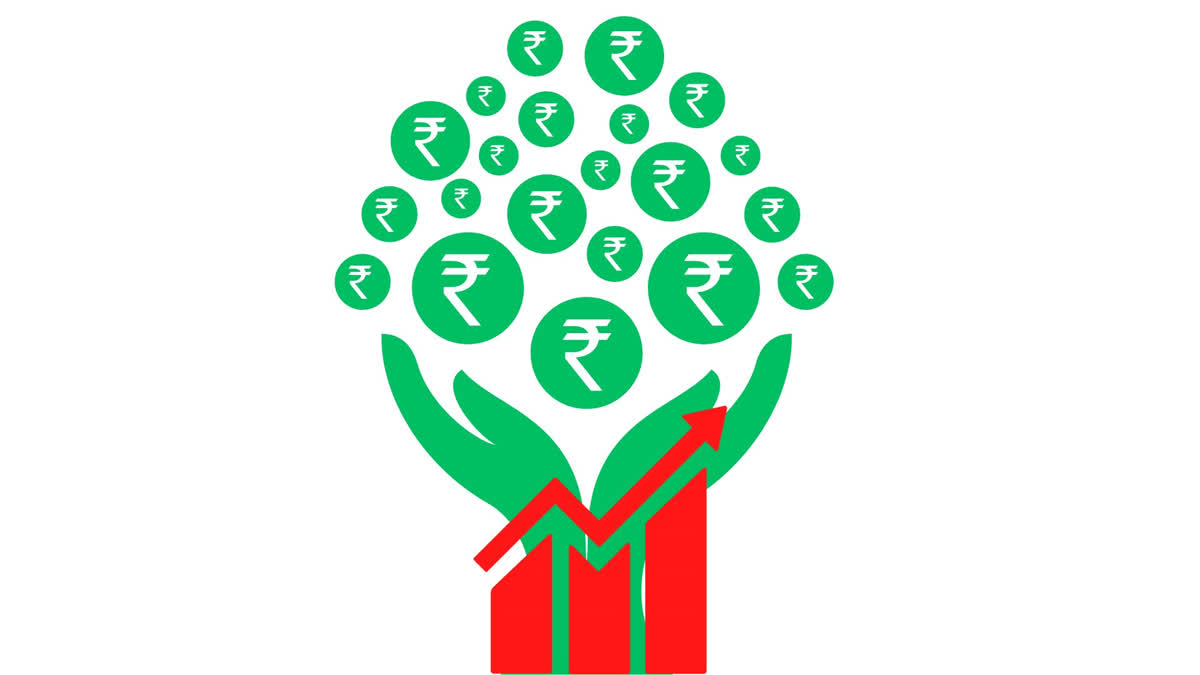New Delhi: India’s provisional GDP growth in the last financial year (April 2022 to March 2023) has come in as a positive surprise for many experts who predicted it to be below or at around 7 percent. It means that despite external challenges, including the adverse economic impact of Russia-Ukraine war in Europe, India’s economic recovery is on track as the negative impact of pandemic has subsided.
It seems that better than anticipated growth is mainly on account of higher exports and lower imports in the fourth quarter (Jan-March 2023) of the last financial year. It also helped in the fourth quarter GDP growth at 6.1 percent much higher than market expectations.
Weak private consumption cause of concern- According to Sunil Sinha, Principal Economist at India Ratings and Research, weak private final consumption during the last fiscal is an issue as the current recovery in consumption demand is showing a K shaped recovery. “The same has once again been reflected in the PFCE growth in the 4QFY23, which came in at just 2.8 percent, second slowest growth in the fourth quarter after 4QFY20,” Sinha told ETV Bharat in a statement.
Also read- India's 6.1 pc GDP growth sets new record globally
According to Sinha, with inflation easing, private final consumption growth is expected to acquire some momentum. “But the current consumption demand is highly skewed in favour of goods and services consumed largely by the households falling in the upper income bracket. A broad-based consumption recovery therefore is still some distance away,” observes the economist.
Gross fixed capital formation- On the demand side, gross fixed capital formation (GFCF) and exports in 4QFY23 witnessed reasonably good growth. Government final consumption expenditure (GFCE) recorded a low single digit growth of 2.3 percent in 4QFY23 but that was primarily due to a high base of 4QFY22.
Also read- GDP growth momentum is weakening in emerging Asian economies: Oxford Economics
According to the rating agency, a healthy growth of 8.9 percent y-o-y in GFCF in 4QFY23 and 11.4 percent y-o-y in FY23 reflects the sustained focus of the government on capex. Sinha said the 11.4 percent growth in FY23 heartened because it had come on a high base of FY22 whereby the GFCF had grown 14.6 percent y-o-y.
“In the absence of corporate sector capital expenditure, it is no doubt providing the necessary support to the ongoing recovery, but India Ratings believes for a sustainable growth and recovery of the Indian economy revival of private corporate sector capital expenditure is a must,” he added.
Explained: Why India is a bright spot among emerging economies
The other encouraging feature of the last financial year is exports which despite global headwinds had shown a y-o-y growth of nearly 12 percent in the fourth quarter and 13.6 percent in the year. The export growth in the FY 2021-22 was estimated at 24.3 percent. However, this may not sustain going forward due to global growth slowdown. The recent monthly exports data are hinting at it.
Agriculture sector performs well- In the supply side agriculture grew at 5.5 percent on a year-on-year basis in the fourth quarter while the yearly growth has been estimated at 4 percent which was 3.3 percent in the preceding financial year.
Manufacturing woes- Though the industrial sector grew at 6.3 percent y-o-y in the fourth quarter and clocked an overall 4.4 percent in FY 2022-23. But the manufacturing sector recorded a modest growth of 4.5 percent in the fourth quarter but overall growth for the year was just 1.3 percent. Among the other segments of industry construction and electricity did well.
Services sector rebound- According to the GDP data, the services sector, the largest component of the country’s GDP, grew at 6.9 percent y-o-y in 4QFY23 and 9.5 percent y-o-y in FY 2022-23. Some of its segments which were severely dented for being contact intensive and were not showing signs of revival in FY22, have shown traction in FY23. The largest component of services sector, trade, hotels, transport and communication grew at 9.1 percent y-o-y in 4QFY23 and 14 percent y-o-y in FY23.
The other components of the services sector namely - financial, real estate and professional services clocked a growth of 7.1 percent each in both the fourth quarter and for the financial year as a whole as well. Sunil says despite global headwinds, the growth momentum witnessed in FY 2022-23 is indicative of the Indian economy’s resilience.
However, the road ahead is not going to be easy so long as PFCE does not recover fully and become broad based, said the economist. In fact, the real wage growth became nearly flat or even turned negative in some months of the last financial year due to high inflation which has just started cooling down due to the Reserve Bank’s tight monetary policy.
According to him, since much of the growth in consumption demand is driven by the wage growth of the household sector, a recovery in their wage growth is an imperative for a sustainable economic recovery. In its latest report, global economic think tank Oxford Economics also flagged the waning economic growth in emerging Asian economies including India.



